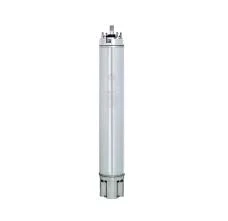Dec . 04, 2024 21:30 Back to list
deep well submersible pump wiring
Understanding Deep Well Submersible Pump Wiring
Deep well submersible pumps are essential pieces of equipment for extracting water from underground sources. They are typically used in agricultural, industrial, and residential applications where groundwater extraction is necessary. One of the crucial aspects of installing and operating these pumps is the wiring, as proper electrical connections ensure efficiency and safety in the pumping system.
What is a Deep Well Submersible Pump?
A deep well submersible pump is a type of pump that is installed underground in a well. Unlike standard pumps that are located above the water source, submersible pumps are designed to be submerged in the water, allowing them to push water to the surface rather than pulling it. This design is more efficient, as it reduces the possibility of air leaks, which can impair water flow.
Components of a Submersible Pump System
Before diving into the wiring specifics, it's important to understand the main components of a deep well submersible pump system
1. Pump Motor The electric motor is typically located at the bottom of the pump and is responsible for driving the pump impellers. 2. Pump Bowl Assembly This consists of multiple impellers that work together to lift water from the well. 3. Column Pipe The water travels through this pipe to reach the surface. 4. Discharge Head This is located at the top of the well and connects to the plumbing system, directing water into the home or irrigation system. 5. Electrical Wiring A critical component, the wiring connects the motor to the power source.
Wiring a Submersible Pump
Wiring a deep well submersible pump involves several essential steps
deep well submersible pump wiring

1. Understanding Power Requirements Before you start any wiring, it's essential to know the power requirements of the pump. Most submersible pumps operate on either 230V or 460V and require a dedicated circuit to prevent overload.
2. Selecting the Right Cable It’s crucial to use the right type of cable for submersible pump wiring. Most installations use submersible pump cable that is specially designed to withstand moisture and pressure. These cables often come with multiple wires—typically three for a three-phase pump and two for a single-phase pump.
3. Wiring Connections Proper connections should be made between the pump and the power source. For single-phase pumps, the connections usually involve two wires (line and neutral) plus ground. For three-phase systems, three wires are needed for the phases and one for grounding.
4. Sealing Connections All electrical connections must be sealed adequately to prevent water intrusion. Use watertight connectors and electrical tape to ensure longevity and reliability.
5. Testing the System After wiring, it's essential to test the system before regular operation. Check for any voltage drops and ensure that the motor is receiving the proper voltage.
Safety Considerations
Safety is paramount when dealing with electrical components. Always turn off the power supply before making any electrical connections. Additionally, it is advisable to consult with or hire a qualified electrician if you are not comfortable with electrical wiring.
Conclusion
Wiring a deep well submersible pump correctly is vital for its performance and longevity. Understanding the components and adhering to safety protocols will ensure a successful installation. Regular maintenance checks on both the pump and the wiring system can help prevent potential issues and extend the life of the equipment. By following best practices, users can enjoy a reliable water supply from their deep well submersible pumps for years to come.
-
Submersible Water Pump: The Efficient 'Power Pioneer' of the Underwater World
NewsJul.01,2025
-
Submersible Pond Pump: The Hidden Guardian of Water Landscape Ecology
NewsJul.01,2025
-
Stainless Well Pump: A Reliable and Durable Pumping Main Force
NewsJul.01,2025
-
Stainless Steel Submersible Pump: An Efficient and Versatile Tool for Underwater Operations
NewsJul.01,2025
-
Deep Well Submersible Pump: An Efficient 'Sucker' of Groundwater Sources
NewsJul.01,2025
-
Deep Water Well Pump: An Efficient 'Sucker' of Groundwater Sources
NewsJul.01,2025
-
 Submersible Water Pump: The Efficient 'Power Pioneer' of the Underwater WorldIn the field of hydraulic equipment, the Submersible Water Pump has become the core equipment for underwater operations and water resource transportation due to its unique design and excellent performance.Detail
Submersible Water Pump: The Efficient 'Power Pioneer' of the Underwater WorldIn the field of hydraulic equipment, the Submersible Water Pump has become the core equipment for underwater operations and water resource transportation due to its unique design and excellent performance.Detail -
 Submersible Pond Pump: The Hidden Guardian of Water Landscape EcologyIn courtyard landscapes, ecological ponds, and even small-scale water conservancy projects, there is a silent yet indispensable equipment - the Submersible Pond Pump.Detail
Submersible Pond Pump: The Hidden Guardian of Water Landscape EcologyIn courtyard landscapes, ecological ponds, and even small-scale water conservancy projects, there is a silent yet indispensable equipment - the Submersible Pond Pump.Detail -
 Stainless Well Pump: A Reliable and Durable Pumping Main ForceIn the field of water resource transportation, Stainless Well Pump has become the core equipment for various pumping scenarios with its excellent performance and reliable quality.Detail
Stainless Well Pump: A Reliable and Durable Pumping Main ForceIn the field of water resource transportation, Stainless Well Pump has become the core equipment for various pumping scenarios with its excellent performance and reliable quality.Detail
